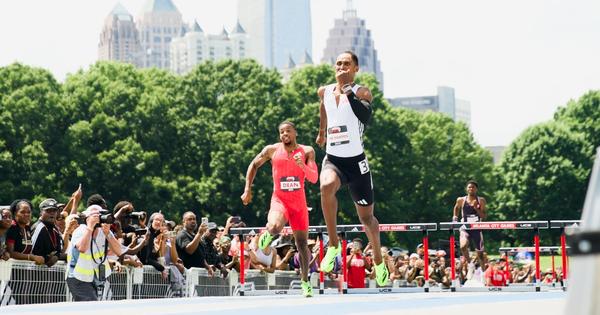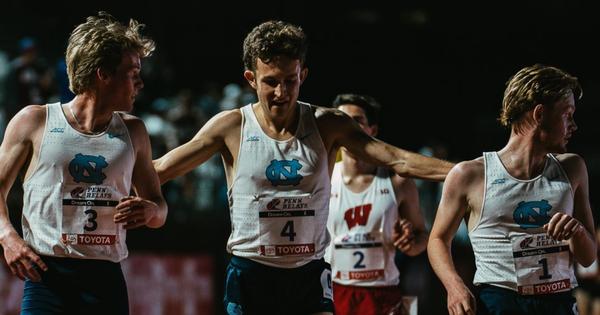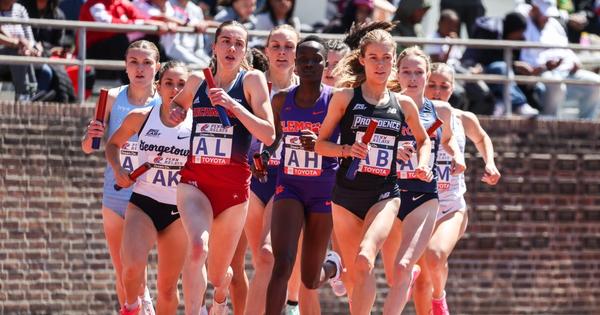By Paul Snyder
May 21, 2025
Not to go full Will-Hunting-asking-a beautiful-woman-on-a-date here, but when you stop and think about the events contested at your standard track and field meet… they’re arbitrary.
Would we still crown the same athletes with the title of “world’s fastest man/woman” if the marquee sprint distance was something slightly different, like 85m or 120m?
Why do we race the 100m? Why 400m? Why 1500m? Yes, yes, we know those distances are based on logical subdivisions of a standard track length or French people really liking 500m ovals.
But we’ve put a person on the moon. We’ve put a supercomputer in your pocket. We’ve invented the espresso martini.
This is all to say, the world has kept spinning since track and field’s standardized distances were set. And while there are plenty of people attempting to revolutionize the sport right now, they’re largely attempting to do so at the level of bureaucracy. How can we pay the athletes more? How can we improve the product from a broadcast standpoint? How can we incentivize the best athletes to compete more frequently? How can we employ more mixed relays to… we don’t know.
Outside of things nobody wants like World Athletics’s ploy to change how the long jump is scored, basically nobody is attempting to change the geometry of competition itself. But why? Basketball has long tinkered with its three-point line. No two baseball stadiums boast the exact same dimensions. By not even considering playing with the physical confines of the events themselves, we’re leaving a lot on the table in terms of ways to possibly make track more compelling to the masses. Nothing makes an athlete reconsider their tactics like a change in layout of the sport itself. And nothing leads to more interesting outcomes than when all competitors in a contest have to quickly abandon their tried-and-true approach to the sport.
So credit where credit is due to the folks behind the Adidas Atlanta City Games, where a temporary, straight, 200m track played host to two world bests across two scarcely contested distances. Nigeria’s Favour Ofili went 15.85 for 150m, making her the first woman to ever dip under 16 seconds, and Alison dos Santos ran 21.85 in the 200m hurdles.
Fans were also treated to solid, albeit wind-aided performances from Great Britain’s Zharnel Hughes (19.55 for 200m) and South Africa’s Akani Simbine (9.86 for 100m), and a wind-legal 10.98 for American Cambrea Sturgis, all in Atlanta’s Piedmont Park.
But go back and watch that 200m hurdles footage again. You’ll notice two things. One, that a straight track makes for a very cool visual, even with a general absence of trackside fans. And more importantly, that nobody seems to really know what to make of the race distance so it plays out differently from your typical 400m hurdle attrition race or your full-throttle 110m hurdles affair. Seems like there’s something there worthy of kicking the tires on.
File what we’re about to suggest under “there are no bad ideas in brainstorming.”
While it would surely be fun (and expensive) to build a series of extremely long straight tracks, or bizarrely shaped ones of varying lengths, the more feasible—while still being a bit goofy—idea is to fuss with race distances more often.
Imagine a meet where the running events are billed to both fans and athletes as follows: a short sprint (50m to 200m), a long sprint (200m to 600m), a short middle-distance race (600m to 1200m), and a long middle-distance race (1200m to 1800m). Athletes don’t even know what distance they’ll be racing until they are called to the track, at which point a random number generator spits out a distance within the event’s parameters.
That would inevitably create a track event like no other. In all likelihood, athletes would never have contested most of the events cooked up through this zany methodology, sending conventional racing tactics out the window. But there’s a “shoot for the moon and land among the stars” element of this proposal: maybe we can offer a bunch of crazy ideas and then settle on something less daring but exciting nevertheless. Maybe the athletes find out race distances the week of the meet, and are allowed to choose among their options during a floating entry period. Maybe the distances are standardized but the surface changes like tennis opens. The possibilities are endless, but you don’t know what will be a surprise success if you don’t try.
We’re not suggesting this Fever Dream Meet format be anything other than a once-a-season novelty. It’d be hard to get athlete buy-in—particularly for the 200m/400m specialist sweating out a possible high-stakes 600m race—for anything of consequence, but from a fan perspective, it would be killer for narrative-building. You get a look at which athletes possess surprising range, an underappreciated kick, previously undiscovered strength, and which ones lucked out by having their true best distances align most closely with the ones most frequently contested.

Paul Snyder
Paul Snyder is the 2009 UIL District 26-5A boys 1600m runner-up. You can follow him on Bluesky @snuder.bsky.social.




